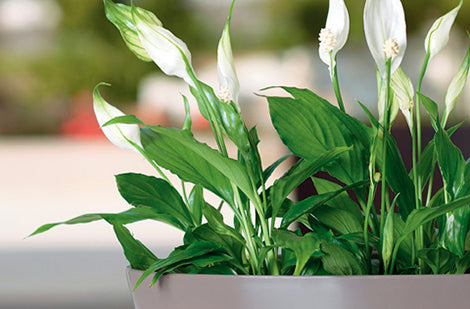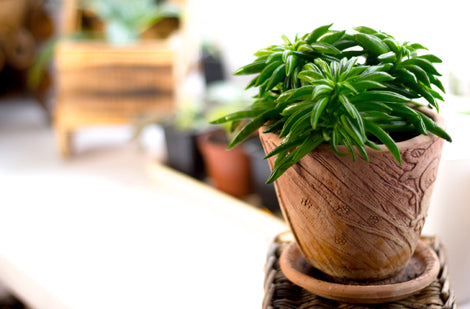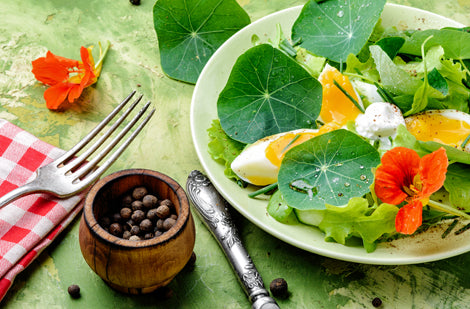Monstera deliciosa 'Thai Constellation'
Monstera deliciosa 'Thai Constellation'
Monstera deliciosa 'Thai Constellation'
Exposure
- Bright indirect light
Rusticity
- Spectacular galaxy-like variegation
- Architectural and split foliage
- Highly sought-after trendy plant
- Adds a chic jungle touch
- Stable and controlled growth
Allow yourself to be captivated by the Monstera 'Thai Constellation', a jungle star that will transform your interior into a living art gallery. Each deep green leaf is speckled with a myriad of cream and white patches, reminiscent of a distant, star-studded sky. More than just a plant, this spectacular cultivar creates a dramatic focal point and instantly elevates the level of sophistication in any decor. Acquire this highly sought-after specimen and add a touch of celestial exoticism to your collection.
Characteristics
- Foliage : Large, glossy leaves, deeply lobed and split (fenestration), characterize this evergreen foliage. The stable variegated colouring features marbling ranging from cream to pure white on emerald green.
- Stems : Stems are robust and require staking to support the weight of the large mature leaves. Blooming is rare indoors.
- Light : Requires Bright light without direct sun to maintain the intensity of its variegation without burning the foliage.
- Habit : Climbing and bushy when mature. Needs support to mimic its vine-like behavior in the natural environment.
- Growth : Average. Its growth is stable but less rapid than the species type. Can reach impressive dimensions in a pot.
- Soil : Use a rich and very well-draining Indoor plant potting mix, ideally aerated with bark or perlite.
- Temperature and Humidity : Prefers a stable ambient temperature (between 18°C and 25°C). Demands **high humidity** (above 60%) to prevent tip browning.
- Resistances : Good resistance to diseases if drainage conditions are optimal. Sensitive to dry air.
Use
- Types of Use : Specimen plant or exceptional feature in a large floor pot. Ideal for spacious offices or bright room corners.
- Decorative Advantages : Offers a strong architectural structure and introduces captivating variegated colour. Brings a chic and trendy exotic jungle ambiance.
Maintenance
- Watering : Moderate. Let the top third of the soil dry out between waterings. Avoid wetting the foliage to prevent spots and fungal infections. Significantly reduce watering in winter.
- Fertilization : Apply a balanced liquid fertilizer, diluted to one-quarter strength, regularly from spring to fall.
- Pruning : Prune to control shape and size. Remove yellowed or damaged leaves with sharp, clean shears.
- Staking : Provide a support (moss, coir, or wood) as soon as the plant grows larger to encourage large, mature leaves.
- Cleaning : Clean the leaves regularly with a damp cloth to maximize light absorption.
Plant details
Dimensions
Dimensions
Characteristics
Characteristics
Habit:
- Climbing
- Flared
Flowering colours:
Plant needs
Plant needs
Watering:
- When the top 2 inches are dry
Maintenance:
- Average
- Fertilize regularly
- Return in the fall
Soil requirement:
- Well drained
- Soil for tropical plants
- Soil for cacti and succulents
- Rich
Features
Features
Resistance:
Attract:
Use:
- Pot
- Hanging
- Trellis
- Arrangement
Attribute:
- Evergreen Foliage
- Moderate Growth
- Tuteur
- Toxic
Related articles
-

Potting House Plants: which pot to choose
Read the articleBien qu'une plante puisse passer plusieurs mois et parfois même plusieurs années dans le même pot, avec le temps ses racines envahissent tout l'espace disponible. Il devient important de choisir...
-

Moving Up a Level: Advanced Guide to Repotting ...
Read the articlePropagate your violets! Discover the simple cutting method, the secret to the perfect soil mix, and how to fight mealybugs.
-

The Complete Guide to Buying and Caring for Ind...
Read the articleBringing a touch of nature to your home with plants is a great idea! Not only do they beautify your living space, but they also help purify the air. However,...
-

Build Your Own Terrarium: The Complete, Easy Gu...
Read the articleThe terrarium is the perfect addition to your decor! Learn how to easily create your own miniature garden with our complete guide.
-

Create a garden with succulents
Read the articleLes plantes grasses n’ont pas leur pareil pour créer des arrangements à la fois impressionnants par leurs couleurs, leurs formes et leurs textures et faciles à entretenir. Qu’on les agence...
-

Houseplants to discover - Butterfly Palm or Are...
Read the articleDypsis lutescens, anciennement Chrysalidocarpus lutescens
-

Calathea: The Essential Guide to Mastering the ...
Read the articleCalathea is a stunning addition, but it's demanding! The key to its success? Humidity. Find out why tap water and dry air are its worst enemies and how to give...
-

Jade Plant (Crassula): The Easy-Care Succulent ...
Read the articleThe jade plant is a must-have! Learn all the secrets to caring for this resilient succulent that naturally grows into an elegant miniature tree.
-

Madagascar Dragon Tree: Embrace Effortless, Gra...
Read the articleAdd a modern touch to your home! The Madagascar Dragon Tree is low-maintenance, perfect for beginners, and stands out with its slender look and two-toned foliage.
-

Aspidistra: The "Cast Iron Plant" Indestructibl...
Read the articleDon't have a green thumb? The Cast Iron Plant is for you! Tolerant of shade and missed waterings, it's perfect for lobbies and offices. Learn how to maintain its leathery...
-

Embrace the Fern: The Champion of Shade and Tro...
Read the articleGot a dark corner? Ferns are your allies! They are easy to care for if you master one factor: humidity. Learn how to water them perfectly for spectacular and full...
-

-

Kalanchoe: The Secret to Massive Blooms That La...
Read the articleNeed lasting colour? The Kalanchoe blooms profusely for over two months! An easy succulent that tolerates neglect and adds a vibrant touch to your home.
-

Snake Plant: The Unkillable Houseplant, Perfect...
Read the articleThe Snake Plant is an ideal houseplant for everyone, whether you're a beginner or an experienced gardener. Its resilience, ease of maintenance, and decorative appearance make it an essential choice...
-

Edible Flowers: Top 5 for Garden and Kitchen
Read the articleOffrant une belle gamme de couleurs, de formes et de textures, les fleurs comestibles enthousiasment les amoureux de jardinage et de cuisine.
-

Tropical Flowering Plants: A touch of the exoti...
Read the articleLes plantes tropicales à fleurs ont tout pour faire tourner les têtes! Colorées, odorantes, généreuses, elles n’ont pas leur pareil pour égayer une aide de repos, un balcon, une terrasse....
-

Keep a palm tree on the terrace - why not!
Read the articleDifficile de résister à l’appel des tropiques quand le soleil et les températures clémentes se pointent le bout du nez. Rien de mieux qu’un palmier sur la terrasse ou le...
-

Bring Your Plants Indoors for Winter: The Compl...
Read the articleDon't get caught by the first frost! Prepare your outdoor plants for winter with our complete guide.
-

When and how to repot house plants
Read the articleAlthough a plant can spend several months and sometimes even several years in the same pot, over time its roots invade all the available space.
-

Choosing the best potting soil for your indoor ...
Read the articleDon't let your plants stall: learn how to choose the ideal potting mix and optimize drainage for vibrant foliage.

























